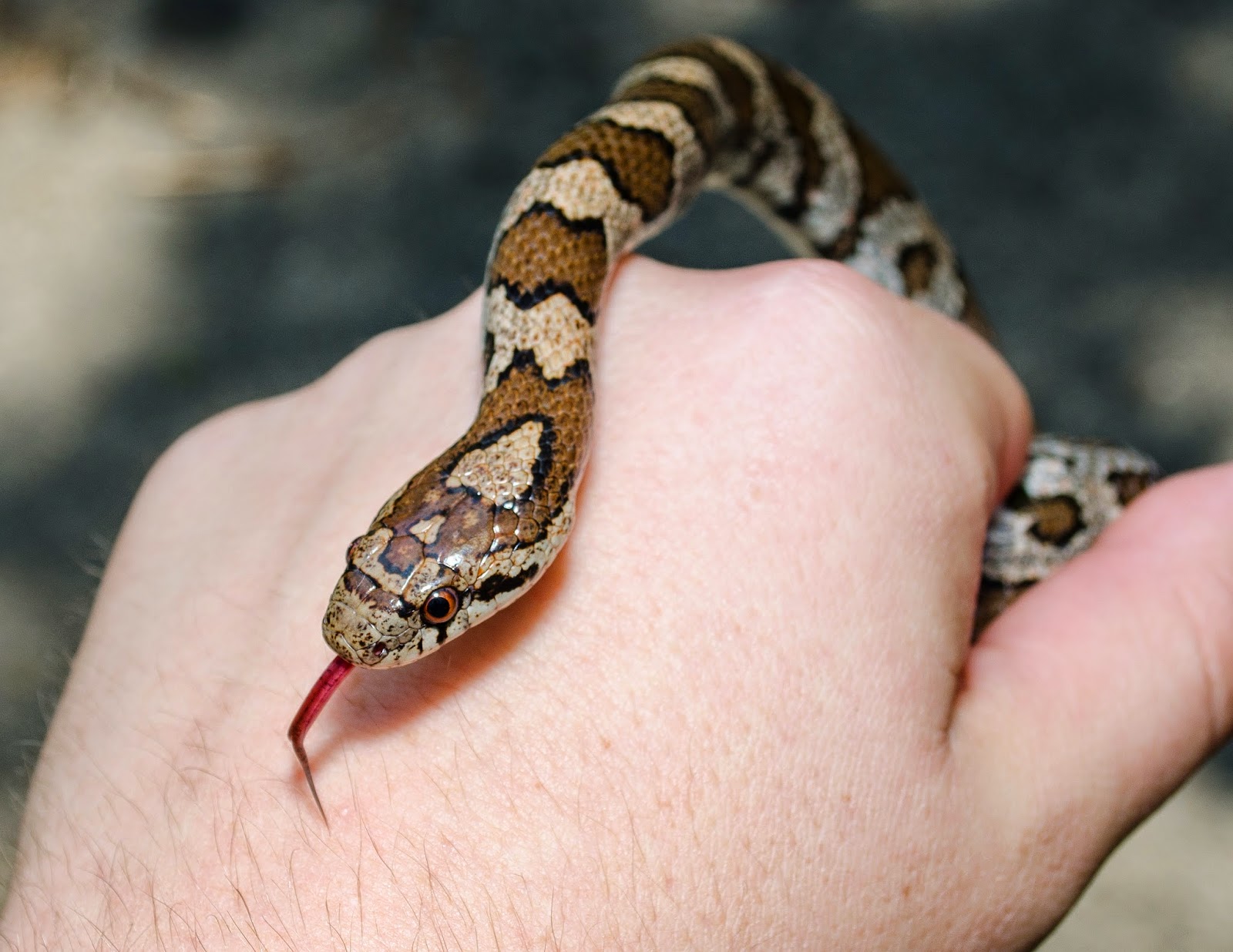

They are nocturnal hunters and are often found resting during the day in old barns and under wood. Although the diet of adult milk snakes primarily consists of rodents (such as voles, mice, and rats), they also have been known to consume a variety of other animals: birds and their eggs, other reptiles, amphibians, and invertebrates. Milk snakes are much more opportunistic eaters than the fox snake or corn snake. They are also known to eat birds and their eggs, frogs, fish, and other snakes (including venomous species like coral snakes and rattlesnakes) and their eggs. Adults' diet is primarily small mammals, but frequently includes lizards (especially skinks). Young milk snakes typically eat crickets and other insects, slugs, and earthworms in the western U.S., juveniles also feed on small lizards and other young snakes. Unless frightened, milk snakes move slowly. If cornered or harassed, it may vibrate its tail and strike energetically, though of course they are non-venomous, have only tiny teeth and their tails lack a rattle. When threatened, a milk snake will usually first try to escape. These snakes tend to be secretive and remain hidden. However, they are able to climb and swim. They are primarily terrestrial and attempt to blend in with ground litter. Milk snakes are mostly nocturnal, especially during summer months. gaigeae, is melanistic (almost all black) as an adult.
Milksnake handling Patch#
The eastern milk snakes also have a light-colored V-shaped or Y-shaped patch on their necks. Enough distinction exists among the five to make the eastern milk snake fairly easy to identify. Juvenile milk snakes, which are more reddish than adults, are often killed because they are mistaken for copperheads. Milk, fox, and scarlet snakes are killed because of a resemblance to the venomous pygmy rattlers. triangulum), it can resemble the coral snake, corn snake, fox snake, scarlet snake, and most importantly, the venomous snake genera Agkistrodon and Sistrurus. Red touches yellow, it's bad for a fellow." Ī young milk snake found in central Tennessee that has just eaten a lizardĭue to the many colors of the eastern milk snake ( L.

Males typically are larger than females in maturity, although females can be bulkier than males similar in length as well. However, unusually large milk snakes can become rather bulkier than average-sized adults and potentially weigh up to 750 to 1,400 g (1.65 to 3.09 lb), though high weights as such are generally reported from captivity. Adults in the wild apparently average from 38 to 225 g (1.3 to 7.9 oz) in North America. Depending on subspecies, they can be as small as 14" (36cm) or as large as 72" (183cm) long. There is a significant amount of variation among milk snakes in terms of size. Milk snakes enter hibernation from late October or November to mid-April. In some situations, milk snakes also migrate seasonally, during the winter they move to higher and drier habitats for hibernation and moister habitats for the summer. Typically, milk snakes live in forested regions however, they can also be found in swamps, prairie, farmland, rocky slopes, and sand dunes/beaches. Habitat Īcross the wide range of this species, habitat varies. Milk snakes can be found from the southeastern extreme of Canada through the eastern half of the United States.


 0 kommentar(er)
0 kommentar(er)
